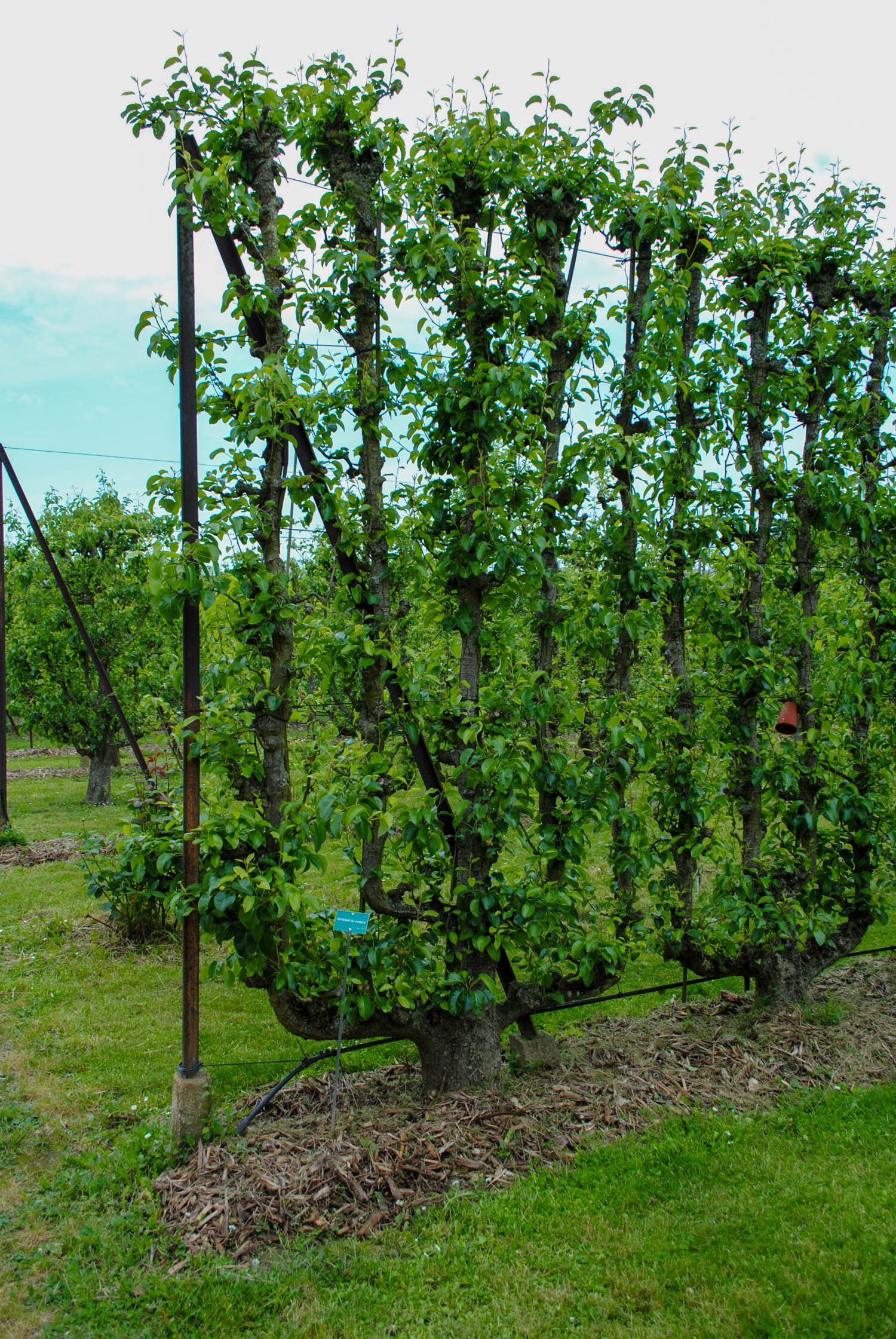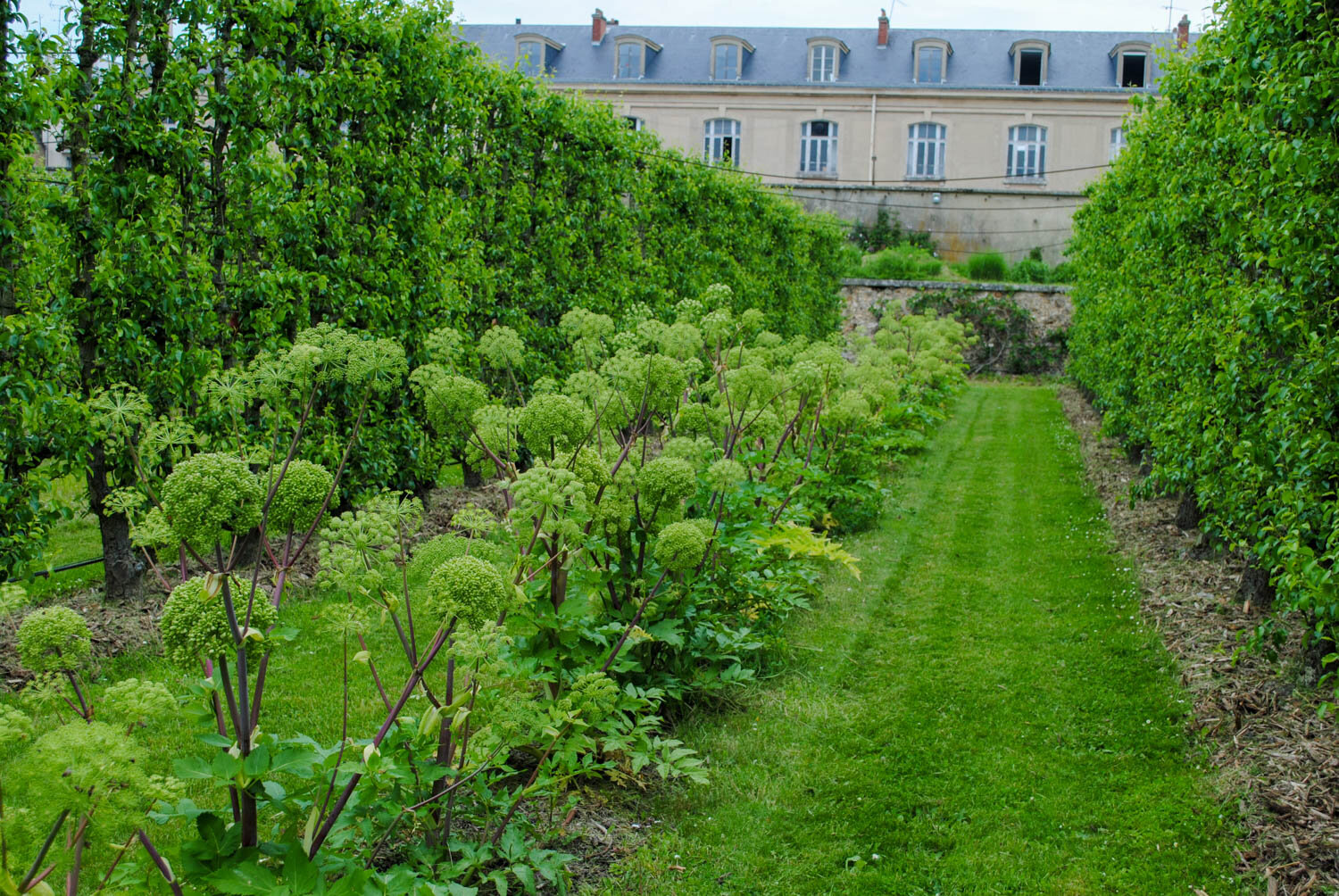Karen and I were craving Pad Thai the other night. In thinking of what else could go with this Asian dish, I remembered that we had some Napa cabbages (aka Chinese cabbages) in the fridge that I saved from a hard freeze a few weeks earlier. They were the beautiful 'Red Dragon' variety, a new cultivar that has crinkled purple foliage. Napa cabbages amaze me because they grow so fast, but these heads were a bit smaller, perhaps because I got them in the ground a bit late. I like the petite size, though. They fit well in the fridge where they will last for several weeks in a bag after harvesting.
‘Red Dragon’ Napa cabbage after a few weeks in the fridge still holds up well.
Because these heads were so beautiful, I wanted something more than just throwing them into a stir fry. I remembered this Napa cabbage salad I had a restaurant once with a sweet vinaigrette and these crunchy noodles and almonds on top.
I walked through the garden to see what else I could throw into my salad. I noticed my kohlrabi that I covered to protect from the hard freeze looking good and ready to harvest. It amazes me how such a thin layer of floating row cover is so effective at preventing freeze damage. Even the cauliflower and kale leaves in the next bed over were burned, and yet the kohlrabi that was covered showed no damage.
The corm of kohlrabi
Some of you may not be very familiar with kohlrabi, which roughly translates as cabbage (kohl-) turnip (-rabi). It is the same species as broccoli, cauliflower, and cabbage, but instead of an enlarged head or flower, kohlrabi has been selected for its swollen stem or corm. It frustrates me to see people (even prominent magazines) call this structure a bulb. A bulb, of course, is modified leaf tissue wrapping around a central meristem, or growing point. Just cut a kohlrabi open, and you won't see layers like you would a bulbous onion. No, instead you'll see an off white, delicious stem core under the green or purple exterior. I tell those who have never tried it and are missing out to imagine the crunch of an apple with a sweet, nutty broccoli flavor. Yes, this vegetable with its crunch would go very well with the ramen noodles and almonds I would use as a topping. (Side note, even the leaves of kohlrabi are edible. The main reason I like to protect the plant during the winter is because the foliage sweetens a bit after a freeze, and I cook it like collards.)
Kohlrabi and Napa cabbage being prepped for the salad.
I modified a recipe I found online, and after making it, I can happily say that I have added another dish to our kitchen repertoire. Even Karen thought it was so good she went back for seconds.
If you don't have either of these vegetables in your garden, both of them grow fairly quickly. Therefore, consider adding some Napa cabbage and kohlrabi to your spring seed orders. With this delicious salad, you won’t be disappointed growing something new.
INGREDIENTS
THE GREENS
1 Napa cabbage
1 bunch scallions
2 corms of kohlrabi
THE TOPPING
1/3 cup butter
1 package ramen noodles, broken
2 tablespoons sesame seeds
1 cup sliced almonds
A pinch of salt (if using unsalted butter)
THE VINAIGRETTE
1/4 cup apple cider vinegar
3/4 cup vegetable oil
1/2 cup white sugar
2 tablespoons soy sauce
DIRECTIONS
Thinly chop or shred the head of the Napa cabbage. Mince the scallions. Peel the exterior of the kohlrabi corm and thinly slice or shred. Mix all three together for the green salad base.
For the topping, preheat the oven to 350 degrees F. Melt the butter in a bowl, and mix the ramen noodles, sesame seeds, and almonds into the pot with the melted butter. Put the mixture onto a baking sheet, apply a pinch of salt to the toppings, and bake this topping in the oven. You will need to watch them and stir them often to make sure they do not burn. When the topping is golden brown, remove from the oven.
For the vinaigrette, in a small saucepan, heat apple cider vinegar, oil, sugar, and soy sauce. Bring the mixture to a boil for 1 minute. Remove the pan from heat, and let the dressing cool.
Combine the vinaigrette, the topping, and the greens immediately before serving. The ramen noodles in the topping will get soggy if premixed for a while before eating. Enjoy!
Delicious Napa cabbage and kohlrabi salad with toppings and vinaigrette.




























